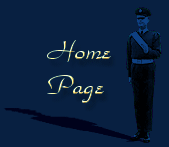|
|
|

UK &Singapore 1964-66
| After getting
sorted out on return from Cyprus I took up duty at RAF Marham in Norfolk.
It was a NATO Bomber Air Base shared by the RAF and USAF. My duties
covered Ground Defence; Atomic, Biological and Chemical Warfare protection;
and Firefighting. I had a staff of five senior Regiment NCOs and
a large contingent of airmen.
Marham was a very busy station and the main Strike Command Aircraft (Bombers) were stationed there - Valiants and Vulcans. On the far side of the airfield we had the USAF Nuclear Stores and it was ‘out of bounds’ to all except those working there - even to me as the Base Fire Officer and in charge of the Atomic Protection Unit. We had practice emergency dispersal exercises from time to time, when essential personnel were moved to another base; a simulated war exercise essentially. It was a damn nuisance at times but necessary in the circumstances. It was at this time I started thinking of a life outside the Regiment. There had been no promotions in the Regiment for 7 years and with 12 years’ seniority in my rank, career prospects were getting slimmer as I got older. I decided it was time to ‘cut my losses’ and apply to ‘retire at my own request’ which, if approved, would enable me to collect my pension benefits instead of resignation which would carry no benefits. With this in mind, I had interviews at Australia House in London with both Australian Army and RAAF panels and was offered a commission in both these services with seniority and rank. The Army, in view of my Parachuting and other army type roles in various theatres, came up with an appointment to their Aviation Regiment (which had a parachute role) at Oakey near Toowoomba, Queensland, and the RAAF offered a position as Ground Defence Officer at Amberley, near Ipswich , where my wife’s parents lived. Out of all this a reluctant Ministry of Defence (Air) agreed on 31 May 1965 that if I would go the Far East on posting to No.26 Squadron, RAF Changi, for 6 months, they could again consider allowing me to retire. I was attached to the Singapore Light Anti-aircraft Control Headquarters at Bukit Gombak which was responsible for the air defence of Singapore. Confrontation with Indonesia was at its height and parachutists had earlier been dropped just up the coast on the mainland of Johor State. Movement of aircraft had to be closely monitored and defences alerted accordingly. The Deputy Controllers were RAF Regiment and Army and we did 8 hour shifts. After 8 months of this I returned to No.26 Squadron and took command of the RAF Regiment Parachute Unit as well as responsibility for the Squadron’s Light Anti-aircraft training and firing practices on the LAA range at China Rock, a Singapore possession off the coast of Johore living there during those exercises. At the end of 1966 I bade farewell to my RAF associates and courtesy of the RNZAF flew to the RAAF base at Butterworth where I took passage on an RAAF Hercules to RAAF Amberley, Queensland, via Cocos Island, and other Australian bases. To be reunited again with my family was, without doubt, the happiest day of my life. So I farewelled the RAF, after serving twenty three and a half years, three during wartime and at least eleven years in operational theatres post WW II. I enjoyed my years in the Service and the friendships I made, and despite some disillusionment at the way my career turned out, I look back on those years as periods of great learning, instructive and character-building, all of which were beneficial to me as I strove to become a civilian at almost 42 years of age. |
